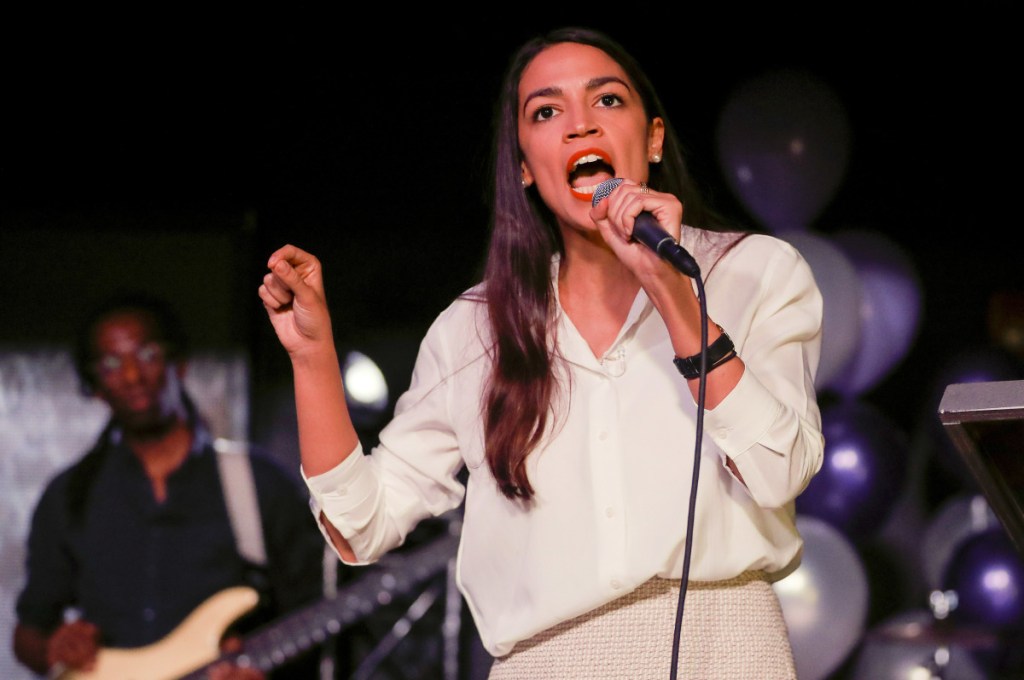In what might have been an offhand comment, Alexandria Ocasio-Cortez, a Democrat newly elected to the House of Representatives, told an interviewer that a marginal income tax of 70 percent might make sense for people earning more than $10 million a year. The idea is attracting attention, and at least one poll suggests it might be popular. The current top rate on earned income, not counting Medicare taxes, is 37 percent. Could it really make sense to almost double it?
The idea is unwise — but worth discussing.
Some economists, including respected authorities on taxes and public finance, say 70 percent could be about right. Their logic is simple. They say taking money from the rich to give to the poor makes society as a whole better off. And the evidence suggests a top rate of 70 percent on the highest incomes would be fiscally productive — meaning not so high that the disincentive to effort and enterprise would cause the government to raise less money than with a lower rate.
The principle that taxes should be progressive — raising proportionally more revenue from the rich than from people of more modest means — is almost universally accepted as fair. The current U.S. tax system is already quite progressive, and it could be made more so by closing loopholes that give the rich advantages. Most voters would probably regard reforms of that kind as making the system fairer still.
However, those very loopholes cause a big problem for high top rates. Warren Buffett famously once said his secretary faced a tax rate higher than his. The reason is that most of Buffett’s income is in the form of capital gains, which are taxed at a lower rate. Without comprehensive tax reform, introducing a top rate of 70 percent, or anything close, would vastly increase the profit to be made from lawful tax avoidance, including arrangements that recast income in the form of capital gains, a maneuver that’s especially appealing to those making more than $10 million a year. (While it’s true that top rates in the U.S. used to run even higher than 70 percent, it’s also true that these taxes raised relatively little additional revenue for the government.)
The U.S. tax code offers countless opportunities for avoidance. Taking this into account, and bearing in mind that over the long term very high top rates would discourage effort and enterprise more severely than most short-term estimates suggest, the rate that gathers most revenue from the rich is probably a lot lower than 70 percent, and maybe not much higher than the current rate.
Why not do both — broaden the tax base by bringing more kinds of income and consumption into consideration, eliminate loopholes, and then push the top rate as far as it can go? Because although most Americans want the rich to pay their fair share, few would regard a deliberate policy of bleeding the successful to the maximum extent possible as either fair or wise. And they’d be right. It’s hardly an accident that the U.S. is the world’s most innovative economy: This is a country that, more than most, admires enterprise and risk-taking, and deems success in business as worthy of reward.
In years ahead, U.S. taxes will need to rise. The government is committed to outlays on Social Security and other programs that far exceed projected revenues. Much additional new spending, especially on efforts addressed to energy and climate change, will also be needed — and will need to be paid for.
Tax reform that broadens the base and closes loopholes should be a main part of the fiscal strategy for dealing with this challenge — and, done right, these changes would also make the tax code more progressive. As part of this larger effort, a moderate increase in the top marginal rate should not be seen as out of bounds. But to go further and proclaim an explicit policy of soaking the rich would be unjust and, in the end, counterproductive.
Editorial by Bloomberg News
Visit Bloomberg News at www.bloomberg.com
Send questions/comments to the editors.



Comments are no longer available on this story